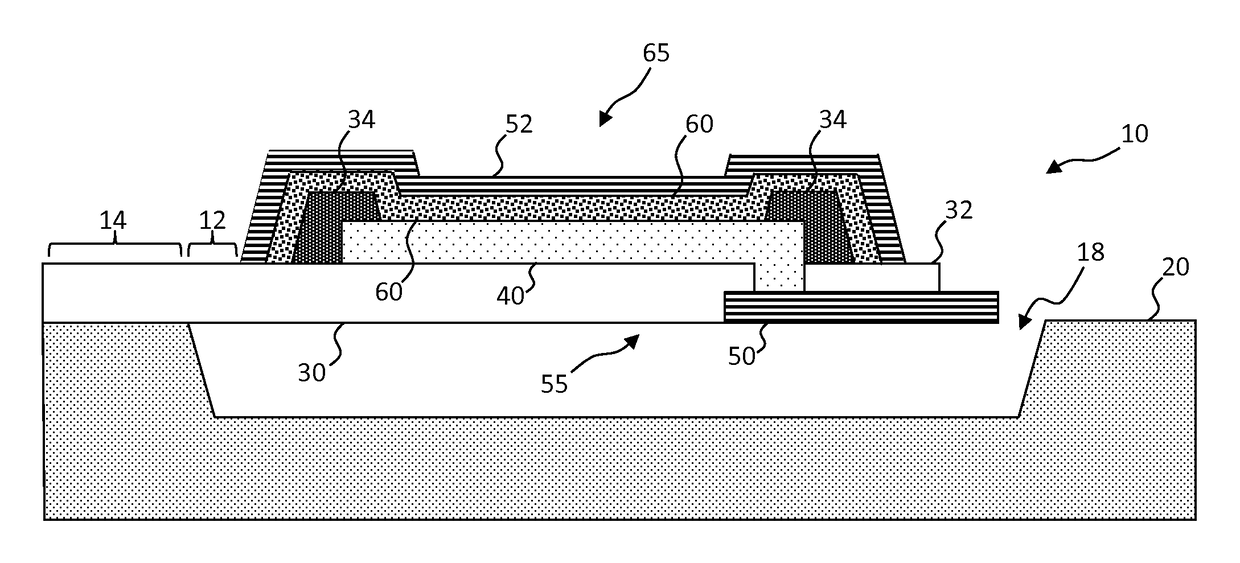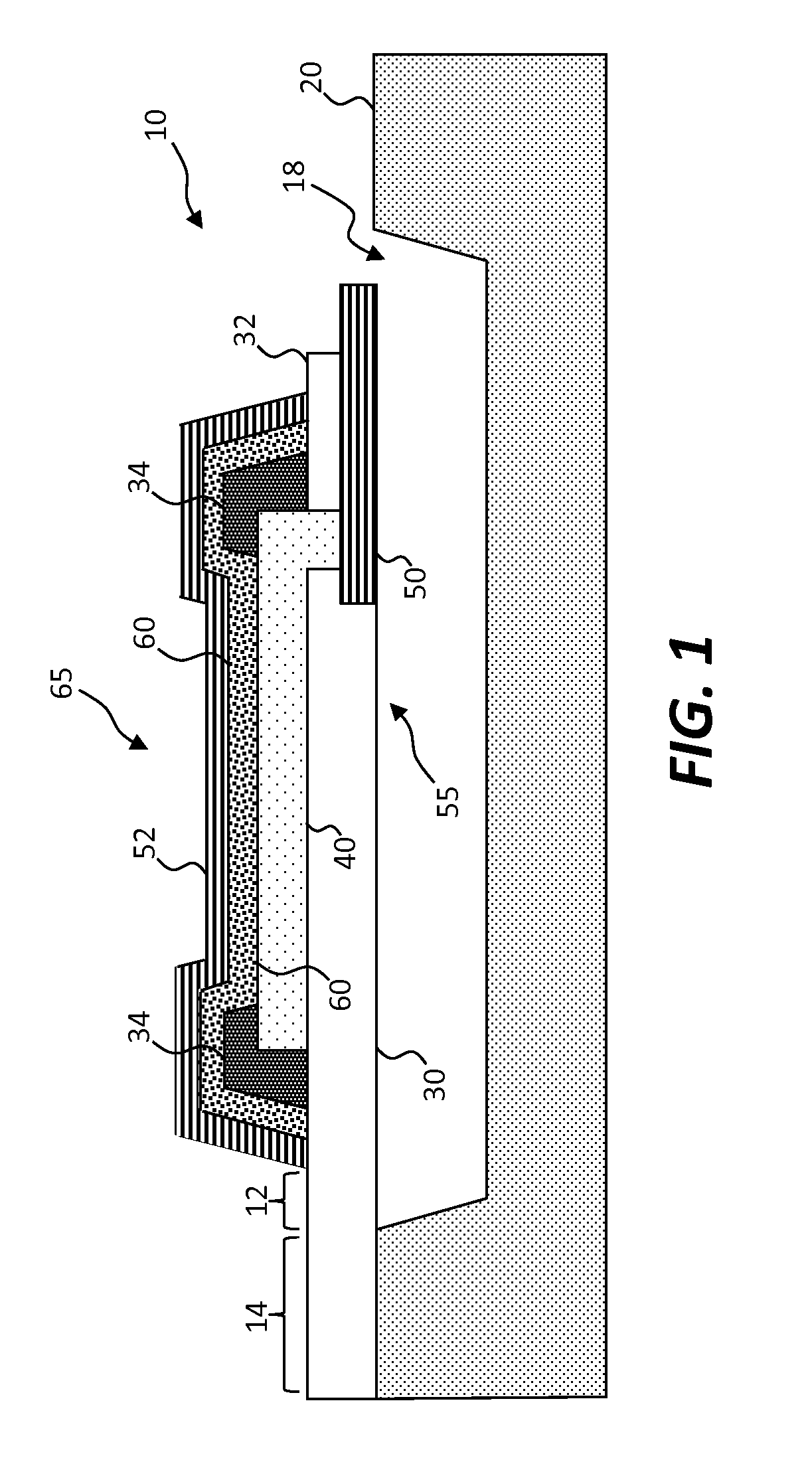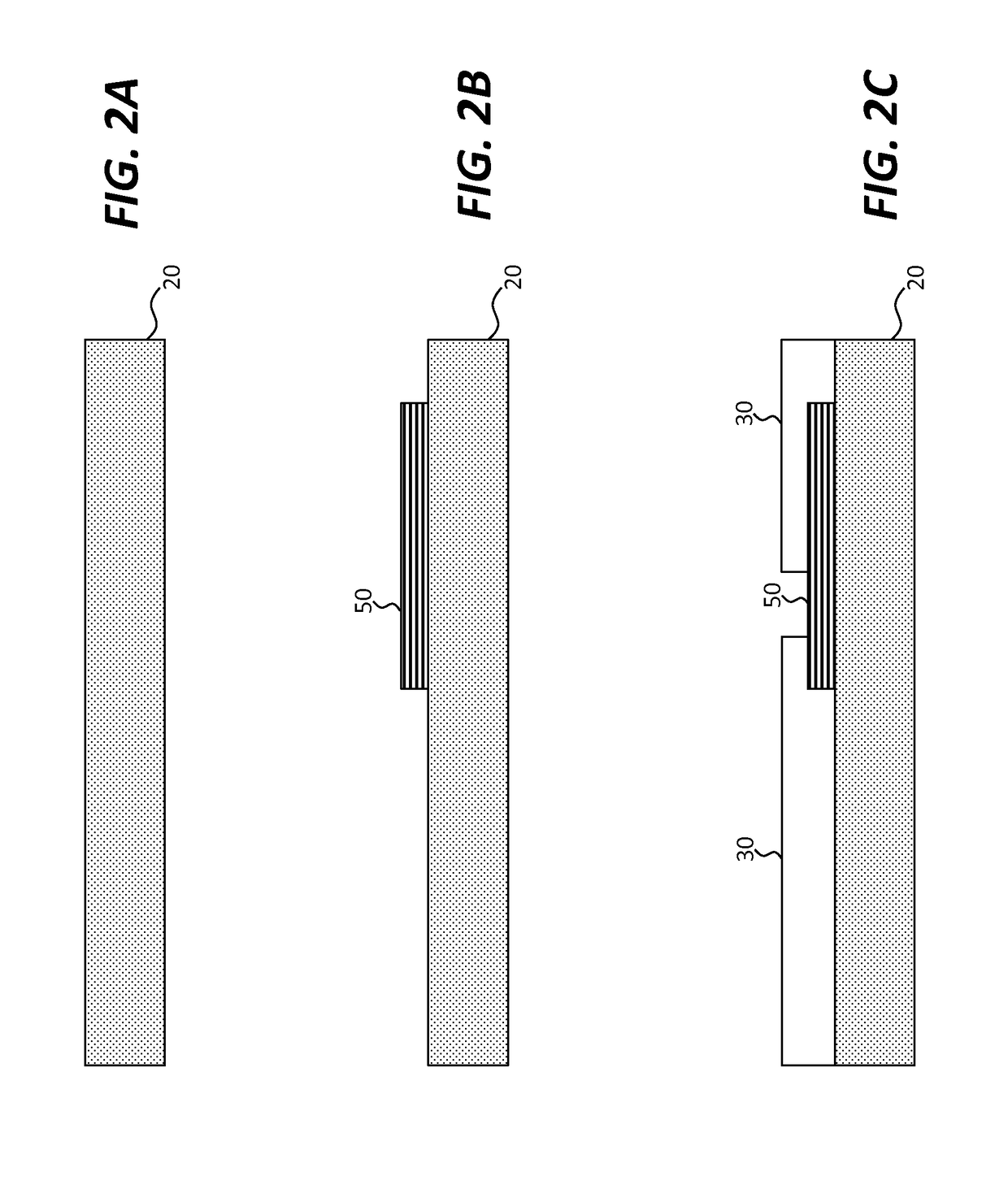Oleds for micro transfer printing
- Summary
- Abstract
- Description
- Claims
- Application Information
AI Technical Summary
Benefits of technology
Problems solved by technology
Method used
Image
Examples
Embodiment Construction
[0091]Referring to the cross section of FIG. 1, in an embodiment of the present invention an organic light-emitting diode (OLED) structure 10 includes an organic light-emitting diode 65 having a first electrode 55, one or more layers of organic material 60 disposed on at least a portion of the first electrode 55, and a second electrode 52 disposed on at least a portion of the one or more layers of organic material 60. The OLED structure 10 includes at least a portion of a tether 12 extending from a periphery of the organic light-emitting diode 65. In an embodiment, the OLED structure 10 is a micro transfer printable OLED 65.
[0092]In the embodiment of FIG. 1, the first electrode 55 includes a first electrode portion 50 and a transparent electrode 40 that is in electrical contact with the first electrode portion 50. The first electrode portion 50 can be opaque, for example made of an electrically conductive metal such as aluminum, silver, gold, tungsten, or titanium. The transparent e...
PUM
 Login to View More
Login to View More Abstract
Description
Claims
Application Information
 Login to View More
Login to View More - R&D
- Intellectual Property
- Life Sciences
- Materials
- Tech Scout
- Unparalleled Data Quality
- Higher Quality Content
- 60% Fewer Hallucinations
Browse by: Latest US Patents, China's latest patents, Technical Efficacy Thesaurus, Application Domain, Technology Topic, Popular Technical Reports.
© 2025 PatSnap. All rights reserved.Legal|Privacy policy|Modern Slavery Act Transparency Statement|Sitemap|About US| Contact US: help@patsnap.com



